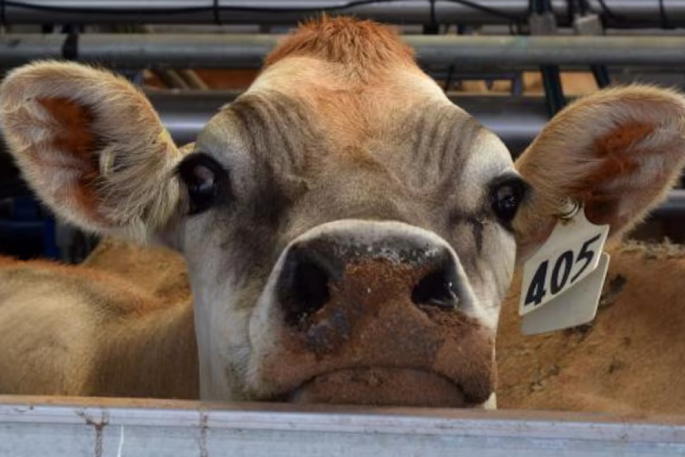A trifecta of economic pressures gouged the cream out of operating profit for the country’s dairy farm owners in the 2022-2023 season, a new industry survey shows.
Industry good organisation DairyNZ says its latest economic survey showed dairy farm owner-operators contended with a drop in milksolids payout, a reduction in their stocking rates and a lift in farm expenses in the season, which led to a notable decline in operating profit compared to the previous season.
It says the milksolids payout received by owner-operators in 2022-2023 was 51c or 6 per cent lower than the price received in 2021-2022.
While milksolids sold per cow increased by 1 per cent, milksolids sold per hectare decreased by 2 per cent due to a 3.4 per cent reduction in animal stocking rate.
This reduction in stocking rate was in part associated with a decline in the average herd size, from 419 to 407 cows, DairyNZ says.
The reduction in herd size also contributed to the reduction in livestock income per kilogram of milksolids in 2022-23, from 55c in 2021-2022, to 51c.
Gross farm revenue per kilogram of milksolids in 2022-2023 at $9.24/kg was 57c lower than in the previous season, a consequence of lower income from the sale of milksolids and livestock.
Farm working expenses and operating expenses, at $5.75/kg and $6.67/kg respectively, were the highest of the last 10 seasons, driven mainly by increases in feed, grazing off, labour and fertilisers expenses.
The operating profit of $3017 per hectare in 2022-2023 was down 27 per cent on the previous season, a consequence of lower gross farm revenue, down 8 per cent, and higher operating expenses, up 3 per cent , DairyNZ says.
The cash surplus at $44,541 was above the 10-year average of $10,654. Cash surplus is the cash remaining from the farming operation during the year after rent, interest, tax, capital transactions, debt repayments, drawings, and discretionary expenses have been deducted.
The industry advocate says factors that contributed to the high cash surplus were the increases in net off-farm income of $36,366, and the significant reductions in net capital transactions ($137,369) and net debt ($38,791), compared to the previous year.
In 2022-2023, the total return on assets at 3.9 per cent , and the total return on equity at 3.5 per cent , were significantly lower than in the previous year but higher than their corresponding 10-year average of 3.3 per cent and 2.5 per cent respectively.
Total liabilities for the dairy farm owner-operator decreased by $46,773 to $4,027,540.
Closing term liabilities were $22.22/kg, significantly lower than the peak of $25.31/kg in 2017-18.
On average, total equity growth was $95,121, $34,231 lower than the growth in equity from profit ($129,388) due to negative growth in equity from capital under revaluation of assets.
Sharemilkers, those who dairy farm on other people’s properties, also experienced an increase in operating expenses, to $3.76/kg, the survey found.
Compared to the 2021-2022 season, their average milksolids payout also decreased, to $4.14/kg.
Despite this tightening, on average, sharemilkers were able to maintain profitability and positive returns, the survey report says.
DairyNZ head of economics Mark Storey says farmers had focused on making changes to manage the increased costs and fluctuations in the milk price payout in order to remain profitable.
“We also noted the ongoing shift in the make-up of costs farmers are facing, with a large increase in interest costs in 2022-2023.
“In this context, it is encouraging to see that debt-to-asset ratios marginally declined, down 3 per cent , which is a positive indication that farmers did not take on more debt in that season.
Mark says with the industry now in the new 2024-2025 dairy season, farms were still operating in a tight economic environment and should stay focused on being considerate of their spending and look to manage their costs and budgets accordingly.



0 comments
Leave a Comment
You must be logged in to make a comment.